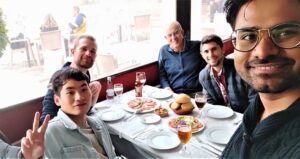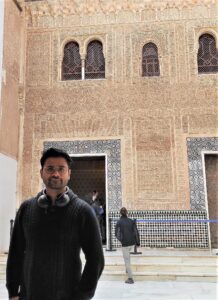Detection of anomalies in whole slide images can retain relevant histological features in training ML models for improved diagnostics.
Visiting new places and learning from diversity has always been joyful to me. I believe that learning from a culture is like finding a unique personality in yourself. Thanks to the CLARIFY network-wide training framework. I have finished my three-month secondment at the University of Granada. The charm of Andalucia, with lovely tapas arrangements and Granadian traditions, left a deep engraving in my memories.
The secondment commenced in September of 2021, briefly introducing project objectives, current progress, and short-term objectives. ESR presented his work and had an interactive discussion on possible advancements. Recommendations and concluded suggestions by the research group of Prof. Rafael Molina were later selected for active secondment goals. A dataset of the histological artifacts is used to test probabilistic modeling methods.
The technical perspective of this stay was equally fruitful in learning and applying new methods to preprocessing area of the project. This secondment helped to familiarize probabilistic models and their benefits over traditional machine learning methods. Gaussian Processes, a non-parametric kernel learning approach, helps in estimating multivariate Gaussian distribution on input data using mean and covariance values of the training dataset. A covariance matrix is calculated using a kernel that measures similarity between two input patches within the dataset. The encoded prior knowledge is later used to find a predictive distribution for new points.
For the artifact detection task, a deep kernel learning (DKL) approach combines the power of hidden representations of neural networks and the power of Gaussian processes. A range of experiments was established to understand the ability of the model to discriminate and delineate patches with the presence of significant anomalies. Optimization of the DKL model is still in progress and will converge into peer-reviewed work. A tuned model will have broader applications in preprocessing pipeline and automated quality control for better performing CAD systems. Overall, this three-month stay impacted project goals and personal development significantly.
Special thanks to Prof. Rafael Molina for hosting and providing with necessary resources for this work.

A visit to Herradura on the invitation of Prof. Rafael Molina

A visit to Alhambra
Neel Kanwal – ESR4

